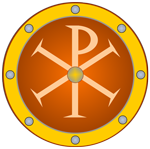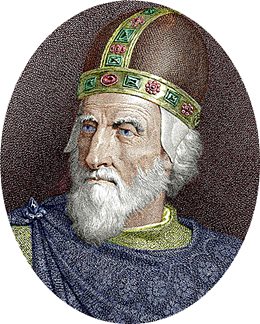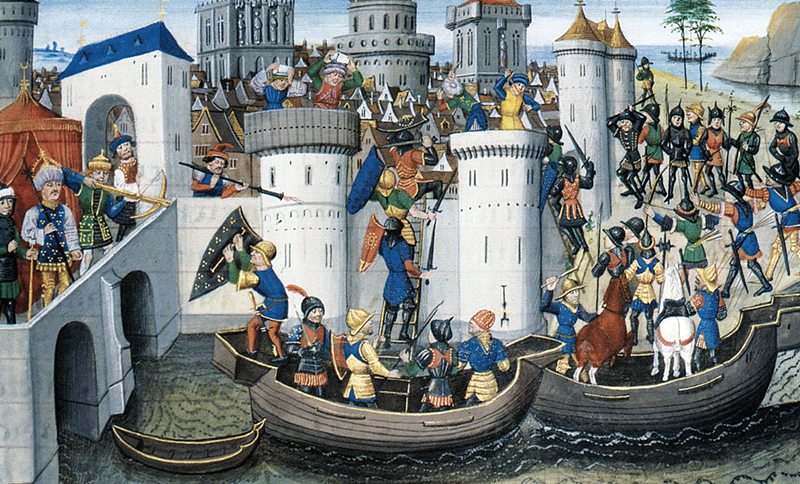
Fall of Constantinople |
year: 12049-13 April 1204 |
| The Crusaders of the 4th crusade captured Constantinople | ★ ★ ★ ★ ★ |
|
enemy: Crusaders
|
location: Constantinople
|
accuracy:
●●●●●
|
|
battle type: City Capture |
war: Fourth Crusade |
modern country:
Turkey |
| ▼ The Byzantines(emperor: Alexios V Doukas) | ▼ The Enemies | |
| Commander: | Emperors Alexios III Angelos, Alexios V | Enrico Dandolo, Boniface of Montferrat |
| Forces: | 15,000 + 20 ships | 10,000 Crusaders, 10,000 Venetians, 210 ships |
| Losses: | Heavy | Heavy |
| Background story: |
| In 1195, Emperor Isaac II Angelos was deposed by his brother in a palace coup. Ascending as Alexios III Angelos, the new emperor had his brother blinded and imprisoned. Isaac had been a failure on the battlefield and in financials but Alexios was even worse, neglecting defense and diplomacy completely, weakening central authority and being reduced to plundering Imperial tombs to meet expenses. In the West, Innocent III became Pope in 1198, and set as goal of his pontificate a new crusade (the fourth). His call was largely ignored by the European monarchs, but several lesser Barons joined in and a crusading army was finally organized. The Italian count, Boniface of Montferrat was elected leader. The first task of the crusaders was to organize transportation to Egypt, the object of their crusade. Venice agreed to transport 33,500 crusaders, a very ambitious number which required many ships and costly preparations. The crusade was to be ready to sail in June1202. As this deadline approached, it became obvious that the army assembling in Venice would be far smaller than expected: only 12,000. This was a serious issue. The Venetians had delivered their part of the agreement preparing 50 war galleys and 450 transport ships, and now they expected to be paid the full amount that had been agreed. As the crusaders were considering their options to find the money, Boniface of Montferrat met accidentally Alexios Angelos the son of the deposed Byzantine Emperor Isaac II. Alexios offered to pay the entire debt owed to the Venetians, give additional rewards to the Crusaders, provide transportation and place the Orthodox Church under the Pope, if the crusaders would divert to Byzantium and topple the reigning emperor Alexios III Angelos. The crusaders as well  Enrico Dandolo |
The Battle: |
 Conquest of Constantinople by the Crusaders Their first act was to attack and capture the district of Galatas (outside the walls) taking control of the Golden Horn. Then 10 Crusader ships sailed alongside the sea walls displaying Alexios Angelos who was supposed to be the rightful and lawful king, but the Byzantines were not impressed. On July 11, the Crusaders took positions opposite the Palace of Blachernae on the northwest corner of the city. Their first attempts were repulsed, but on July 17 the Venetians took a section of the wall of about 25 towers, while the Varangian guard held off the Crusaders on the land wall. The Varangians shifted to meet the new threat, and the Venetians retreated under a screen of fire. The fire destroyed about 120 acres of the city and left some 20,000 people homeless. Alexios III tried to counterattack but retreated without a fight. Embarrassed, he preferred to escape and abandon his subjects, fleeing with the imperial treasure to Mosynopolis in Thrace (near modern Komotini). The Byzantines quickly deposed their runaway emperor and restored the blind ex-emperor Isaac II, robbing the Crusaders of the pretext for attack. The Crusaders were now in the awkward position of having achieved their stated aim, but without having achieved the actual objective, namely the reward that the younger Alexios had (unbeknownst to the Byzantines) promised them. The Crusaders insisted that they would only recognize Isaac II's authority if his son was raised to co-emperor and on August 1, he was crowned Alexius IV Angelos, co-emperor. Now Alexios IV was emperor but unable to keep his promises. The young emperor ordered the destruction and melting of valuable icons in order to extract their gold and silver, but even then he could only raise enough money. In August 1203 Alexios, as he had promised, subsumed the Orthodox church under the Pope. This decision was a shock for the Greeks who turned against him. Opposition to Alexios IV was now fierce, and one of his courtiers, Alexios Doukas (nicknamed “Mourtzouphlos” because of his thick eyebrows), overthrew him and had him strangled to death in January 1204. Alexios Doukas took the throne himself as Alexios V Doukas. Isaac also died in January 1204, probably of natural causes. The crusaders and Venetians, furious for the murder of their supposed patron, demanded that Mourtzouphlos honor the contract with Alexios IV. When the new Byzantine emperor refused, the Crusaders assaulted the city once again. On April 9, Alexios V's army put up a strong resistance which did much to discourage the crusaders. A serious hindrance to the crusaders was bad weather conditions. Wind blew from the shore and prevented most of the ships from drawing close enough to the walls to launch an assault. At this point the Latin clergy intervened to boost the low morale of the attackers. The churchmen used inflammatory language and claimed that “the Greeks were worse than the Jews”, and they invoked the authority of God and the pope to take action. On April 12, 1204, the weather conditions finally favored the Crusaders. A strong northern wind aided the Venetian ships in coming close to the walls. After a short battle, approximately 70 Crusaders managed to enter the city. Some of them opened holes in the walls, large enough for only a few knights at a time to crawl through; the Venetians were also successful at scaling the walls from the sea, though there was extremely bloody fighting with the Varangians. The attackers captured the Blachernae section of the city in the northwest and used it as a base to attack the rest of the city, but while attempting to defend themselves with a wall of fire, they ended up burning down even more of the city. The Crusaders completely took the city on April 13. The crusaders inflicted a horrible and savage sacking on Constantinople for 3 days, during which many ancient and medieval Roman and Greek works were either stolen or destroyed. Despite their oaths and the threat of excommunication, the Crusaders ruthlessly and systematically violated the city's churches and monasteries, destroying, defiling, or stealing all they could lay hands on. |
Noteworthy: |
| The prominent medievalist Steven Runciman, writing in 1954, stated that "There was never a greater crime against humanity than the Fourth Crusade." |
Aftermath: |
| The crusaders established the Latin Empire and other “Latin” states in conquered Byzantine lands. The Byzantines continued the war from unconquered parts of the empire such as Nicaea. The City was recaptured in 1261 but Byzantium never really recovered. |
|
|
